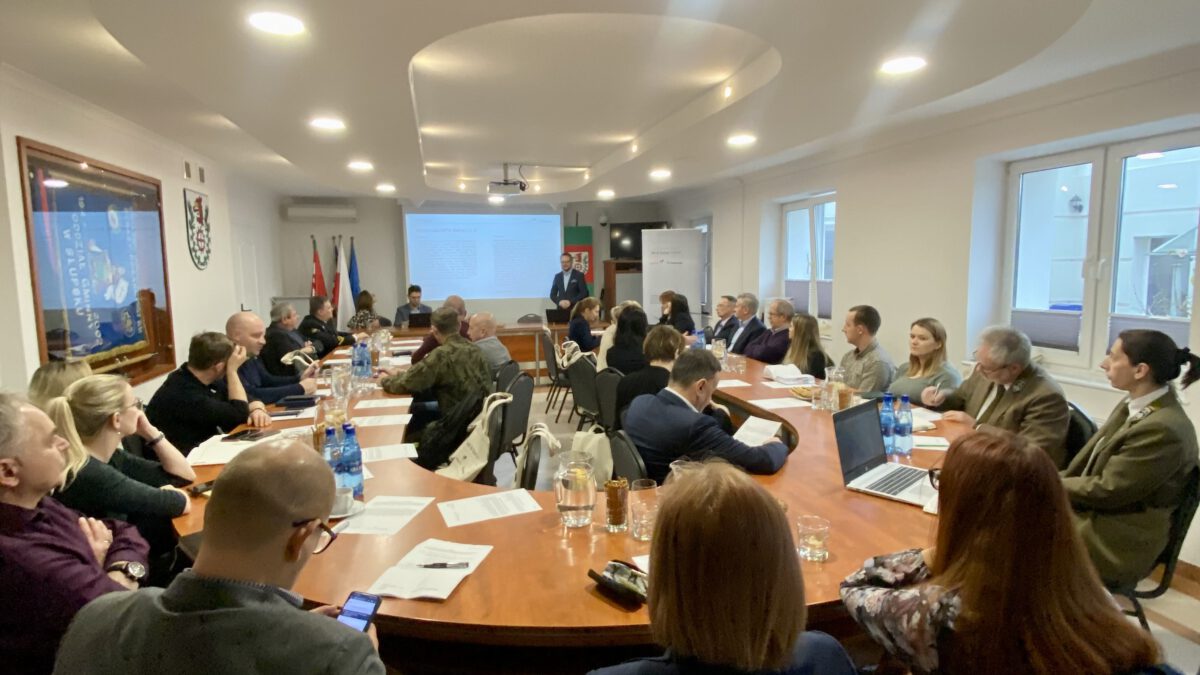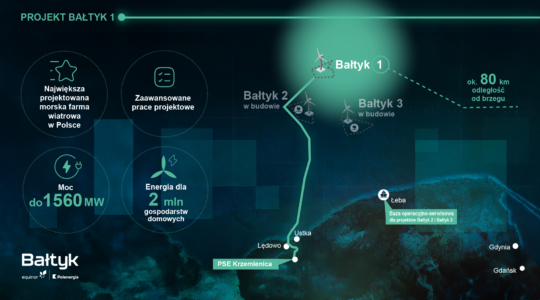
The wind of good change blows from the sea
By 2030, wind farms of close to 6 GW are to be built in the Baltic Sea. In the next 10 years, this capacity will increase to 11 GW. Among the planned investments are three projects jointly implemented by Poland's Polenergia and Norway's Equinor: MFW Bałtyk I, MFW Bałtyk II and the MFW Bałtyk III. Their combined capacity is 3 GW, and this will allow up to 6 million Polish households to be supplied with clean, renewable energy per year.
The two most advanced projects currently being developed by Polenergia and Equinor are the MFW Bałtyk II and the MFW Bałtyk III, which will be located at sea at vicinity of Łeba, accordingly 22 and 37 km from the shore. Their construction is scheduled to start in 2024 and the first electricity deliveries are expected in 2027. Both power plants will be connected to the Słupsk Wierzbięcino substation. The third MFW Bałtyk I power station, which is not scheduled to be commissioned until seven years from now, will be built about 81 km from the coast, also at the level of Łeba. It will be connected to the National Power System at the Krzemienica substation. The land corridor of the connection infrastructure, about 14 km long, will run through the municipalities of Ustka and Słupsk.
The meeting with the inhabitants of localities in the municipalities of Ustka and Słupsk was mainly concerned with investments related to power evacuation from wind farms and the implementation schedule for the OWF Bałtyk II and OWF Bałtyk III projects. During the meeting, representatives of both companies provided information on the route of the cable exporting energy from the offshore power plants. They also answered questions from residents and landowners with whom transmission easement agreements are being concluded.



